Hi ,
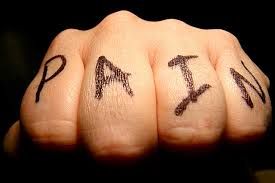
As you might guess the main reason people come to see me is for pain relief. I get the occasional person that wants to improve their health through diet and lifestyle changes, but most of the time pain is the prime motivator for folks. If you are a reader of this newsletter, then most likely you are a patient of mine. Thus, you already know how effective my application of non-force Chiropractic care is for pain relief. This article is about what else I recommend for pain relief.
Although over the counter pain relievers are somewhat effective temporarily, their use comes at a high cost. Their use damages your kidneys, liver, stomach, and intestines. The body will bounce back from this damage if you use these painkillers very infrequently, but their use for chronic pain like arthritis is a bad idea. Tens of thousands of people die every year from the consequences of using the common over-the-counter pain relief medicines such as Advil, Tylenol, Celebrex, ibuprofen, and aspirin. In fact they are 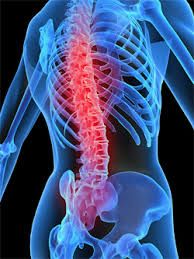 so lethal as they mix it with opiate painkillers like Vicodin to keep people from overusing the opiates and beco ming addicted.
so lethal as they mix it with opiate painkillers like Vicodin to keep people from overusing the opiates and beco ming addicted.
Chronic pain sufferers are the most at risk population for these deaths as they need pain relief several times each day as opposed to the occasional user that might use these meds a few times a year.
So what else is there? The first pain reliever on my list is turmeric – specifically the curcuminoids found in turmeric. A recent study of joint pain sufferers found that across the board turmeric provided better relief than over-the-counter pain relievers. Turmeric has one major problem – it is hard to absorb in the body so you either have to take excessively high doses or use a form that has been treated to improve absorption like the Turmero Active liquid. I have it in the office. Straight high curcuminoid turmeric in 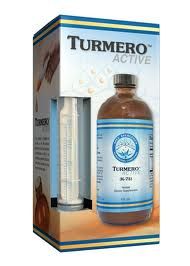 capsules is only about 1% absorbed, while the special blend in Turmero Active is about 10% absorbed. Smaller doses are actually more effective in getting into the bloodstream where it will do some good. It also saves money by being better absorbed.
capsules is only about 1% absorbed, while the special blend in Turmero Active is about 10% absorbed. Smaller doses are actually more effective in getting into the bloodstream where it will do some good. It also saves money by being better absorbed.
Second on my list are anti-inflammatory creams like Super Oxicell and Boswellia creams and anti-inflammatory essential oils. Many herbs and nutriceuticals reduce inflammation when applied right over painful areas. As the inflammation goes down, the pain goes down. A 2005 study by Dr. Sue Chao on the anti-inflammatory properties of essential oils looked at 77 different oils. The study found the top six oils for reducing inflammation were oregano, nutmeg, lemongrass, Melaleuca ericifolia (Tea Tree), dill and peppermint. Lemon, myrtle, tangerine, myrrh, frankincense and lavender closely followed these.

Third on my list is high potency proteolytic enzymes. Sports teams have used these for decades to help with athletic injuries. They provide a completely different pathway in the body for decreasing inflammation as well as reducing scar tissue and promoting circulation to bring good nutrition to the unhappy tissues. In the office we carry Vitalzyme and Purozyme for reducing inflammation. Many patients of mine swear that these enzymes have saved them from back surgery.
If you don’t mind smelling like garlic, another popular anti-inflammatory is DMSO. You have to be careful with DMSO as it is very good at carrying other substances through the skin – so the skin has to be very clean and free of any poisons you don’t want transported into your body. This is particularly good for sore joints. Also specific to joints is the use of chondroitin sulfate and MSM as they support the cartilage formation in joints – if you need it. I tell patients to try a trial for chondroitin or MSM for 1 month to see if it will do any good. It takes a couple weeks to feel any effect. If it is helpful, then use it for about three months only as it stops being helpful after that time.

Counter-irritant rubs, sprays, creams, and roll-ons are a nice way to achieve short-term relief. In the office we use Bio-freeze and Sombra – one cools you down and the other warms you up. These work by providing a mild irritation to the skin. This in turn blocks deep joint pain. The nerves are wired up to pay more attention to the skin nerves than to deep joint nerves. So when you stimulate the skin nerves, a type of switch is flipped that tells your body to ignore the deep stuff and pay attention to the skin. Chemical “hot packs” that don’t actually warn up fall into this category as well.
My favorite therapy for pain in the office is using a heated gel pack for 15 minutes followed by 15 minutes of a refrigerated gel pack (not freezer cold) placed directly the effected area. Muscles like heat to increase circulation to flush away pain chemicals. A heating pad, sauna, spa, hot shower, and a hot pack will also work well. The joints like cold to reduce swelling and pain. Ice is too cold and will shut down circulation too much. While ice is good to stop bleeding into an area in an acute trauma, ice is not good for chronic pain problems. If you are in the office, I might recommend ultrasound treatment as it does the same thing as the heat and cold, except the ultrasound is able to penetrate much deeper into the tissues for a better effect.
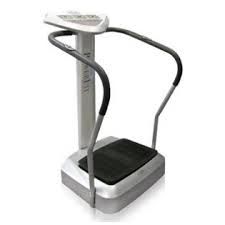
With joint pain many studies have concluded that the single best long term pain relief tool the patient has is exercise. You would think that if a joint hurts that you would want to rest it and keep it quiet. Yet study after study has shown that gentle movement exercise is the best thing for long term management of joint pain. The trick is to do things that do not impact the joints heavily. One conflict here is that high impact exercise is exactly what is needed to prevent osteoporosis. Simple walking has been found to be no help in stopping osteoporosis. I get around this conflict by using whole body vibration in the office. Standing on a vibration plate has been shown in many studies to stop bone loss and even help build bone without damaging the joints. Mini trampolines are another choice.
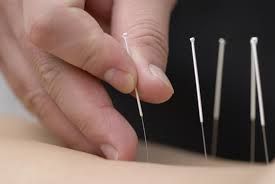
Acupuncture is an excellent choice for managing pain in the body. It is powerful enough to be used to anesthetize patients for dental work and major surgery. Since the causes of many chronic pains involve imbalances in the communication systems of the body, acupuncture is also good at these types of problems.
Along these same lines is the use of massage for chronic pain management. Massage is much more than just a feel good rub down. With a good massage therapist, you will help flush out pain toxins, improve circulation, release spasms, and improve range of motion. It is hard to say enough good things about massage.
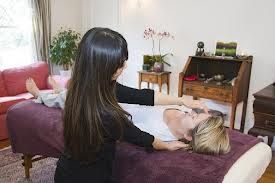
Some people derive great benefit from Homeopathic medicines and other energetic treatments. There are many different energetic treatment forms available these days like Jin Shin Jyutsu, Reki, Shiatsu, and many others.
Not to leave it out, but a very simple source of pain control is our diet. Eliminating vegetable oils, which promote inflammation along with sugars and excess carbohydrates, is a huge step toward reducing the pain you feel. Eliminating any foods from your diet that you are sensitive to also is a big help. For instance potatoes, tomatoes, and peppers are a common cause of joint pain for many people. Making sure that you eat foods that you can digest well is very important for back pain sufferers. So often I find someone suffering with terrible low back pain that is actually coming from an inflamed digestive tract. The intestine inflammation causes the big leg flexion muscles going from the low back to the legs to go into spasm jamming the low back forward pinching the low back joints.

This brings me to my last category for chronic pain relief – visualization, meditation and prayer. All of these have been studied extensively and all are amazingly effective. Pain is a subjective experience and the part of the brain that perceives pain has a dimmer switch in it that controls how much pain we feel. With hypnosis it is shown that the brain can completely shut off pain or increase the lightest touch of a feather into a horribly painful experience. While most of us are not able to have that level of control over our pain consciously, we can gain a fair degree of control through the use of visualization, meditation, and prayer. There are many books and audio programs on this subject available and I urge you to consider making use of these resources for pain control. This puts the experience of pain right in your lap where you can choose to experience it differently.
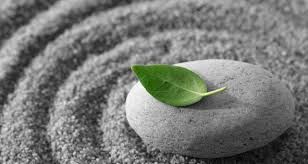
I don’t like pain. Most of you do not like it either. So having lots of alternatives for fighting pain is good stuff. Especially helpful is the fact that all of these methods can be used together in any combination that suits you to produce the best results for your situation.
Pain is no fun, and you are in the best position to do something about it.
Take care,
David